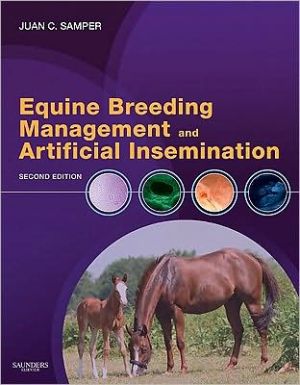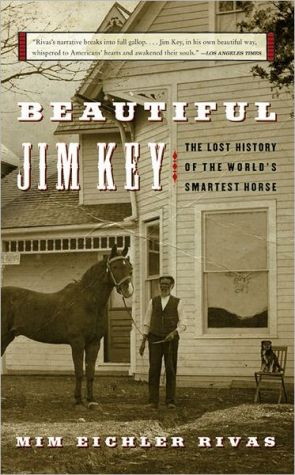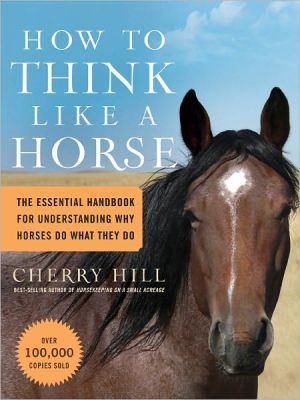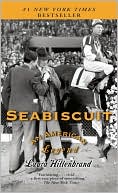Equine Breeding Management and Artificial Insemination
Put the principles of good breeding management into practice with Equine Breeding Management and Artificial Insemination, 2nd Edition for reproductive success! Practical information on the reproductive management of both thoroughbred and warmblood breeding operations prepares you to effectively breed even problem mares and stallions. Plus, detailed content on techniques, procedures, reproductive physiology, and more help you increase reproductive efficiency as well as track and improve your...
Search in google:
Put the principles of good breeding management into practice with Equine Breeding Management and Artificial Insemination, 2nd Edition for reproductive success! Practical information on the reproductive management of both thoroughbred and warmblood breeding operations prepares you to effectively breed even problem mares and stallions. Plus, detailed content on techniques, procedures, reproductive physiology, and more help you increase reproductive efficiency as well as track and improve your results throughout each breeding season.A section on reproduction efficiency evaluation includes a worksheet to evaluate the performance of both mares and stallions during each breeding season, and helps you compare reproductive performance with previous breeding seasons. Detailed descriptions of procedures and techniques including embryo transfer, artificial insemination, and more enable you to implement the methods for better breeding results. Practical information on reproductive management of both thoroughbred and warmblood breeding operations enhance the fertility of problem mares and stallions. World-renowned authors and contributors with years of practical knowledge and experience provide cutting-edge information. Vibrant full-color design and photographs show accurate representations of clinical appearance.Chapters covering the latest reproductive techniques improve chances of successful breeding, and improve survival rates after the birth of the foal. Vital chapters with information on recognizing potential problems help you quickly identify warning signs before fertility is negatively affected. Doody Review Services Reviewer:Jonathan Hale Foreman, DVM, MS(University of Illinois College of Veterinary Medicine)Description:The 27 chapters in this book on equine reproduction cover the stallion, the mare, the fetus, and the newborn foal in a logical and easy-to-follow sequence. The 27 authors are an eclectic mix of scientific and practical experts on equine reproduction. Purpose:The preface states the book's two main objectives: "to define what a theriogenologist is" and "to bridge the gap between the scientist and the field veterinarian or breeder so that the information that is generated in laboratories...can be easily understood and applied." These admirable objectives are attained, in part due to the interesting mixture of authors and their fields or scientific endeavors in equine reproduction.Audience:The audience is never adequately described by the editor, although at various times the book alludes to the audience as veterinarians, veterinary students, and even laymen breeders who perform their own reproductive work without the assistance of veterinarians. Many of the chapters on basic reproductive and endocrine functions will be particularly helpful to veterinary students in conquering one of the many and varied species they are must study in theriogenology courses. The mixture of field practitioners and scientists is helpful in achieving the goal of explaining in an appropriate and useful way the newer scientific findings in the field of theriogenology.Features:The liberal use of illustrations, most in black-and-white but many in color, is the best feature of the book. The color plates of the anatomy and physiology of the various reproductive functions will prove to be particularly useful for newer students of equine reproduction.Assessment:This excellent book is appropriate for many levels: beginner students, senior students, practitioners, and scientists. The liberal use of all types of illustrations, including tables, photographs, ultrasounds, and schematics of anatomy and physiology, make this a must for serious students of equine reproduction.
1. Anatomy and Physical Examination of the Stallion2. Endocrinology of the Stallion3. Semen Collection4. Stallion Behavior5. Sperm Physiology6. Semen Evaluation7. Breeding Management of the Thoroughbred Stallion (Shuttle) 8. Breeding Management of the Warmblood Stallion9. Hormonal Manipulation of the Mare10. Microbiology and Diseases of Semen11. Anatomy and Physiology of the Mare12. Uterine Edema of the Mare13. Breeding Management of the Mare14. Artificial Insemination With Cooled Semen15. Artificial Insemination With Frozen Semen16. Embryo Transfer17. Preservation of Equine Embryos18. Assisted Reproductive Techniques in the Mare19. The Early Pregnancy20. Evaluation of the Foal In-Utero21. Infectious Problems in the Last Trimester of Pregnancy22. Parturition and Evaluation of the Placenta23. The New Born Foal24. Breeding the Post-partum Mare25. Preventive Medicine of the Brood Mare26. Evaluation of Reproductive Efficiency27. Significance of the Equine Genome on the Horse Industry
\ Reviewer: Jonathan Hale Foreman, DVM, MS(University of Illinois College of Veterinary Medicine)\ Description: The 27 chapters in this book on equine reproduction cover the stallion, the mare, the fetus, and the newborn foal in a logical and easy-to-follow sequence. The 27 authors are an eclectic mix of scientific and practical experts on equine reproduction. \ Purpose: The preface states the book's two main objectives: "to define what a theriogenologist is" and "to bridge the gap between the scientist and the field veterinarian or breeder so that the information that is generated in laboratories...can be easily understood and applied." These admirable objectives are attained, in part due to the interesting mixture of authors and their fields or scientific endeavors in equine reproduction.\ Audience: The audience is never adequately described by the editor, although at various times the book alludes to the audience as veterinarians, veterinary students, and even laymen breeders who perform their own reproductive work without the assistance of veterinarians. Many of the chapters on basic reproductive and endocrine functions will be particularly helpful to veterinary students in conquering one of the many and varied species they are must study in theriogenology courses. The mixture of field practitioners and scientists is helpful in achieving the goal of explaining in an appropriate and useful way the newer scientific findings in the field of theriogenology.\ Features: The liberal use of illustrations, most in black-and-white but many in color, is the best feature of the book. The color plates of the anatomy and physiology of the various reproductive functions will prove to be particularly useful for newer students of equine reproduction.\ Assessment: This excellent book is appropriate for many levels: beginner students, senior students, practitioners, and scientists. The liberal use of all types of illustrations, including tables, photographs, ultrasounds, and schematics of anatomy and physiology, make this a must for serious students of equine reproduction.\ \








